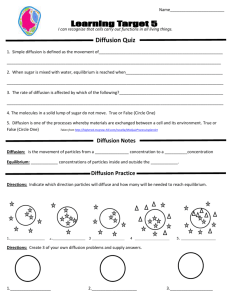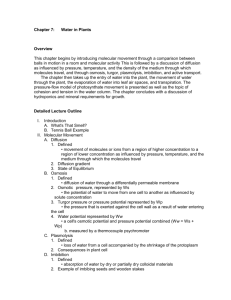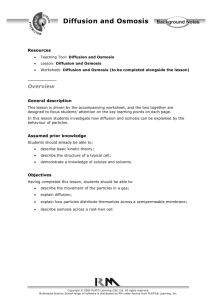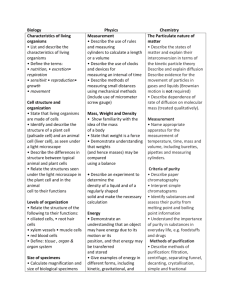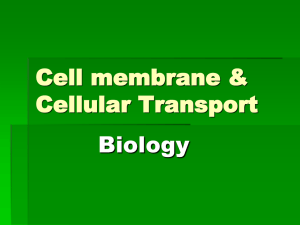What is active transport?
advertisement
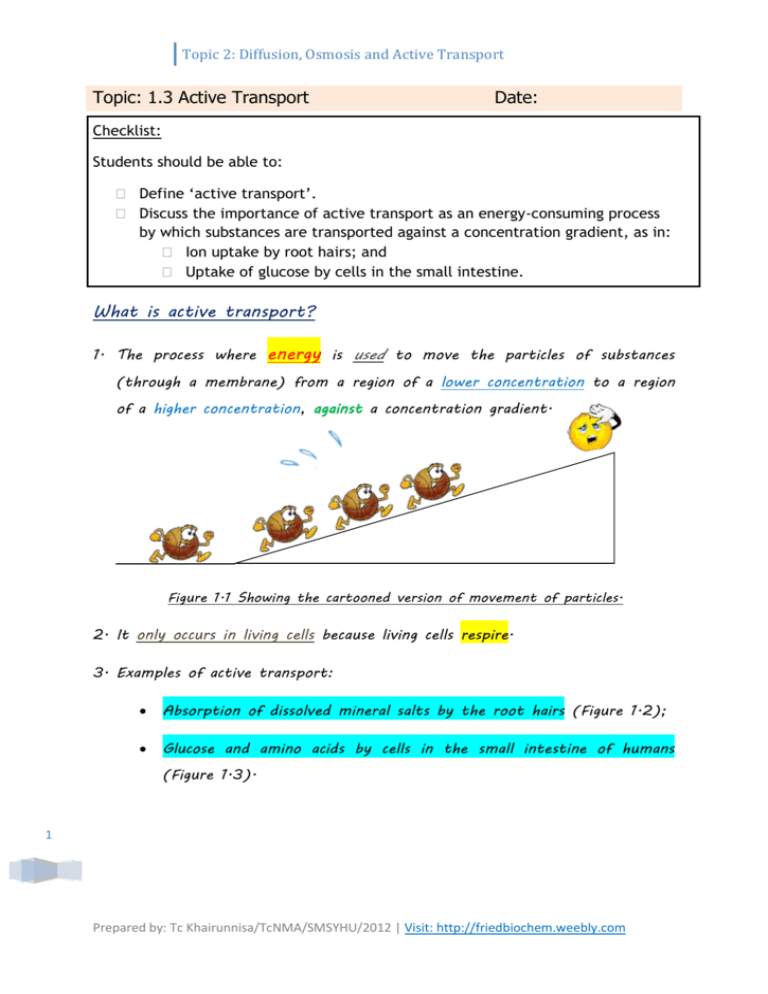
Topic 2: Diffusion, Osmosis and Active Transport Topic: 1.3 Active Transport Date: Checklist: Students should be able to: Define ‘active transport’. Discuss the importance of active transport as an energy-consuming process by which substances are transported against a concentration gradient, as in: Ion uptake by root hairs; and Uptake of glucose by cells in the small intestine. What is active transport? 1. The process where energy is used to move the particles of substances (through a membrane) from a region of a lower concentration to a region of a higher concentration, against a concentration gradient. Figure 1.1 Showing the cartooned version of movement of particles. 2. It only occurs in living cells because living cells respire. 3. Examples of active transport: Absorption of dissolved mineral salts by the root hairs (Figure 1.2); Glucose and amino acids by cells in the small intestine of humans (Figure 1.3). 1 Prepared by: Tc Khairunnisa/TcNMA/SMSYHU/2012 | Visit: http://friedbiochem.weebly.com Topic 2: Diffusion, Osmosis and Active Transport By active transport: When the concentration of ions in the soil is lower than that in the root hair cell sap. Root hairs have to absorb the ions against a concentration gradient. Energy needed comes from cellular respiration in the root hair cell. Figure 1.2 Root hair cells take in dissolved mineral salts through both active transport and diffusion. Figure 1.3 Cells of the small intestine take in glucose through diffusion as well as active transport. By active transport – when there is a lower concentration of glucose and amino acids in the lumen of the small intestines. 2 4. The rate of transport of particles using active transport is much faster than diffusion. Prepared by: Tc Khairunnisa/TcNMA/SMSYHU/2012 | Visit: http://friedbiochem.weebly.com Topic 2: Diffusion, Osmosis and Active Transport 5. How active transport work (i.e. sodium-potassium pump): (4) (3) Energy (in the form of ATP) is attached to the carrier protein. 1.4 Surface Area to Volume Ratio 1. Cells move materials across cell surface membranes in order to stay alive. If they cannot move these material fast enough, it can be fatal for them. 2. Therefore, the rate of movement of substances across the surface of a cell depends on how big the area of cell surface membrane is. (Refer to diffusion notes for other factors that can affect the rate of movement of substances.) 3. The greater the area of cell surface membrane per unit volume, the faster the rate of diffusion of a substance for a given concentration 3 gradient. Prepared by: Tc Khairunnisa/TcNMA/SMSYHU/2012 | Visit: http://friedbiochem.weebly.com Topic 2: Diffusion, Osmosis and Active Transport 4. Actively growing cells are usually small. As the cells grow in size, their metabolism usually slows down. They stop growing once they reach a maximum size. How does an increase in cell volume affect the rate at which materials move into the cell? Complete the following exercises. Cell Surface area/cm2 Volume/cm3 Surface area: volume A 6 1 6:1 B 10 2 5:1 C 18 4 4.5:1 Working: 2 cm B 4 cm 1 cm A 1 cm 1 cm 1 cm C Conclusion: Therefore, the rate of movement of particles is slower in C than in A. As the cell becomes bigger, the surface area to volume ratio decreases. The 4 largest cell of the same shape has the smallest surface area to volume ratio. Prepared by: Tc Khairunnisa/TcNMA/SMSYHU/2012 | Visit: http://friedbiochem.weebly.com
